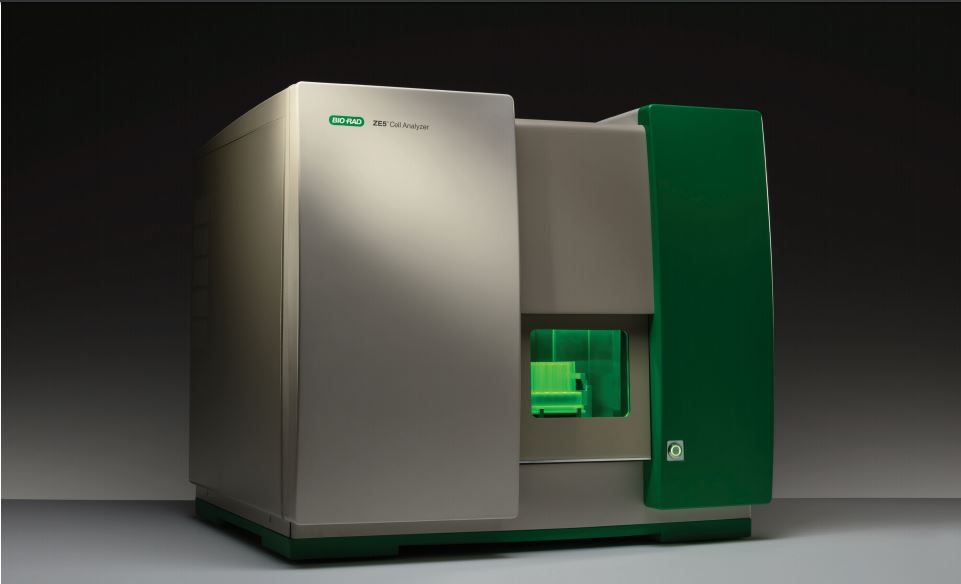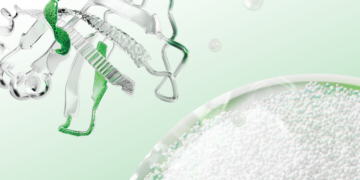Flow cytometry can be labor intensive, and efforts to increase throughput can lead to reduced data quality or even instrument reliability issues such as blockages. While some instruments are more suited for high throughput than others, there are steps that you can take to significantly increase the quantity and quality of the data generated.
Flow cytometry is often time consuming, both in terms of the time needed to prepare samples and the time needed to acquire data. Overall, reducing sample preparation time and increasing flow cytometry throughput can be challenging. However, by following these simple steps, you may be able to significantly increase your flow cytometry throughput while also improving the quality of your data.
Steps to Success
1
Optimize sample preparation
Proper sample preparation is of utmost importance. Visit Bio-Rad Academy for a comprehensive discussion of sample preparation. Because dead cells can cause excessive aggregation, avoid using freshly thawed cells for high-throughput experiments. Instead, use freshly isolated cells or rest the cells post-thaw. Remove dead cells whenever possible, use a DNase treatment and ethylenediaminetetraacetic acid (EDTA) to minimize cell aggregates, and filter cell samples before use.
2
Titrate your antibodies
If you are running a lot of samples, chances are you will be using a lot of reagents. Don’t rely on the manufacturer’s recommended antibody concentration; this is a guide only, and you may find that a several-fold dilution of your antibody works just as well for your assay, potentially saving a significant amount of money.
3
Premix your antibodies

Save time by premixing StarBright Dye conjugated antibodies.
Although this is not recommended for antibodies from other manufacturers, StarBright Dye conjugated antibodies from Bio-Rad are ideal for pre-mixing, up to a year in advance. By preparing your antibody cocktail only once, you can significantly reduce the time it takes to perform your staining while increasing reproducibility by removing potential variations due to pipetting errors.
4
Switch from tubes to plates
This is one of the first steps you should take to increase your throughput: it will significantly speed up your data acquisition. Even if you’re working on an instrument that does not have a plate loader, preparing your samples in plates can dramatically reduce the time needed for manual handling steps such as loading centrifuges and performing wash steps.
5
Concentrate your samples
Maintaining a high event rate is crucial if you want to increase data acquisition speed, but increasing the sample flow rate has a negative impact on data resolution. Instead, make sure your samples are at an adequate concentration to maintain a high event rate without an excessive sample flow rate.
6
Minimize electronic aborts
All instruments have a limit in terms of the volume of data they can handle in a given time; above that limit, data will be lost or electronically aborted. To minimize such loss, use careful thresholding to remove unwanted data, freeing up processing power for crucial data.
7
Avoid and remove doublets
A doublet event is when two or more cells pass through the laser at the same time. Flow cytometers cannot easily differentiate between cells in this situation, so the data often must be discarded. This is typically achieved using doublet discrimination gating. Concentrating your samples and keeping the sample flow rate low can also minimize the chances of doublet events.
8
Thorough instrument maintenance
Take care of your instrument, and it will take care of you. Implement thorough cleaning protocols to keep everything flowing as it should; this is of paramount importance in high-throughput assays in which a large amount of material will be passed through the instrument. If you are using an instrument in a shared facility, consider running a cleaning cycle before as well as after your experiment.
9
Consider automation

The ZE5 Cell Analyzer pairs with robotics from Hudson Lab Automation.
Automated data acquisition will allow you to take your high-throughput flow cytometry to the next level, enabling data collection 24/7, freeing up user time, and improving reproducibility. This is especially true when applied to sample preparation and data acquisition steps.
10
Get the ZE5 Cell Analyzer
Good practice is essential, but nothing makes a bigger difference than having the right tool for the job. In high-throughput flow cytometry, the right tool is the ZE5 Cell Analyzer. Its event rate of 100,000 events/sec means that you don’t have to worry about electronic aborts. Its universal plate loader with shaking and cooling is able to process 96-well plates in less than 15 min. Furthermore, it has powerful 30-parameter optics, making it suitable for both simple and complex assays. It is automation ready and has been integrated with leading automation providers. If you really need high throughput, you really need the ZE5 Cell Analyzer.

Optimize your workflows easily with the ZE5 Cell Analyzer.
Conclusion
By using the right reagents and equipment in the right way, flow cytometry throughput can be significantly improved without compromising data quality. Indeed, you can have the best of both speed and quality with the equipment you’ve got by making strategic changes to your sample preparation and staining steps, maintaining your instrument, and modifying how you acquire your data. Alternatively, trade up to the ZE5 Cell Analyzer for the ultimate high-throughput flow cytometry experience.
More Resources
Bio-Radiations (2025). Cytometry in Drug Discovery: An Introduction to Regulation, Standardization, and Productivity. bio-radiations.com/cytometry-in-drug-discovery-an-introduction-225/, accessed August 31, 2025.
Bio-Radiations (2024). Faster PCR and Flow Cytometry Highlighted in Annual Lab Automation Roundup. bio-radiations.com/faster-pcr-and-flow-cytometry-with-lab-automation-824/, accessed August 31, 2025.
Bio-Radiations (2024). Flow Cytometry and the Law of Bottlenecks. bio-radiations.com/flow-cytometry-and-the-law-of-bottlenecks-624/, accessed August 31, 2025.
Bio-Radiations (2025). Vive la Différence: The Beauty of Diversity in Life, Life Science, and Flow Cytometry. bio-radiations.com/the-beauty-of-diversity-in-flow-cytometry-225/, accessed August 31, 2025.




